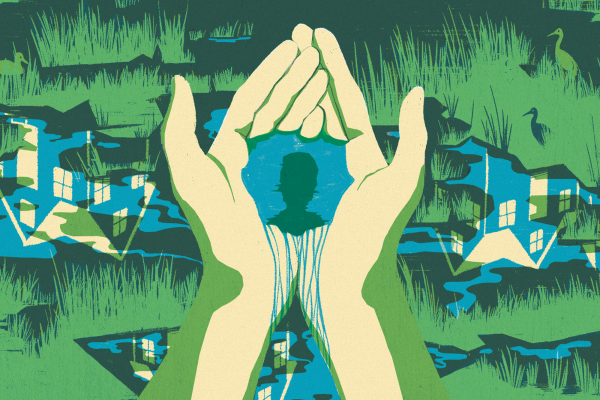WETLANDS PLAY AN essential role in a healthy ecosystem, providing habitat for many species of plants and animals, flood protection, water filtration, and a host of other benefits. But a Supreme Court ruling last spring, implemented by the Environmental Protection Agency in August, resulted in the removal of federal protection for much of the nation’s wetlands. The legal issues at stake in the ruling revolved around distinctions between whether waters must have a “significant nexus” or a “continuous surface connection” or be “directly adjacent” to “traditional interstate navigable waters” to be federally protected by the Clean Water Act. But for the judges who threw out these protections, the case wasn’t just about legal hairsplitting. Nor was it just about conservative and libertarian opinions about the primacy of private property, small government, or weakening regulations.
At its heart, the court’s decision pivoted around a theological question: Does water — does God’s creation — have intrinsic value? Is it something to respect and protect for its own sake, and the sake of the ecosystem as a whole? Or is water’s worth found only in its utilitarian value — as a resource for human use, a source of energy or a means of transportation — and therefore subject to sacrifice on the altar of private enterprise and development?
Read the Full Article

